Here's How 10 New Year's Eve Traditions Got Started
Introduction
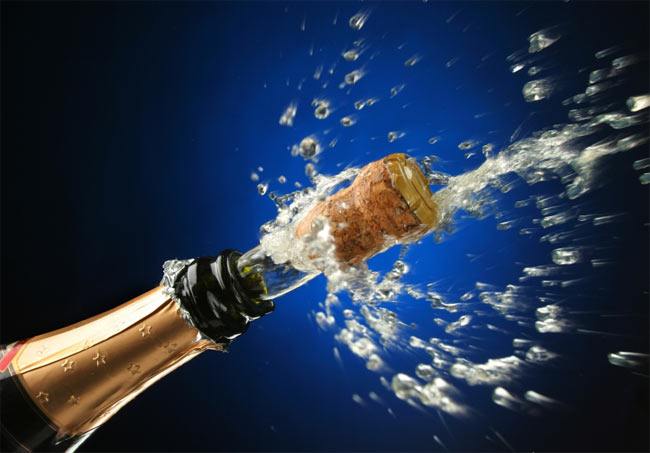
Editor’s Note: This article was updated on Dec. 30, 2017
Whether you’re celebrating in New York City or Nashville, Tennessee, New Year’s Eve follows a pretty similar script: People dress up in their best duds, break out the bubbly and sing "Auld Lang Syne" at the stroke of midnight. If it’s a particularly rowdy party, some things may explode.
But how exactly did these traditions arise?
Many of these rituals have ancient roots and are similar around the world. It turns out that many are designed to ward off evil spirits as we enter the darkest time of the year, said Anthony Aveni, an astronomer and anthropologist at Colgate University in New York, and the author of "The Book of the Year: A Brief History of Our Seasonal Holidays," (Oxford University Press, 2004).
"This is a transitional period," Aveni told Live Science. "I’m looking at my window at all the snow. The worst of it is just beginning because it’s winter. The sun goes away, and when the sun goes away we have to get it back; we have all these rituals designed to get the sun back."
From popping open a bottle of champagne to watching the ball drop in Times Square, here are the roots of 10 New Year’s Eve traditions. [10 Christmas Traditions from Around the World]
Smooch your sweetie
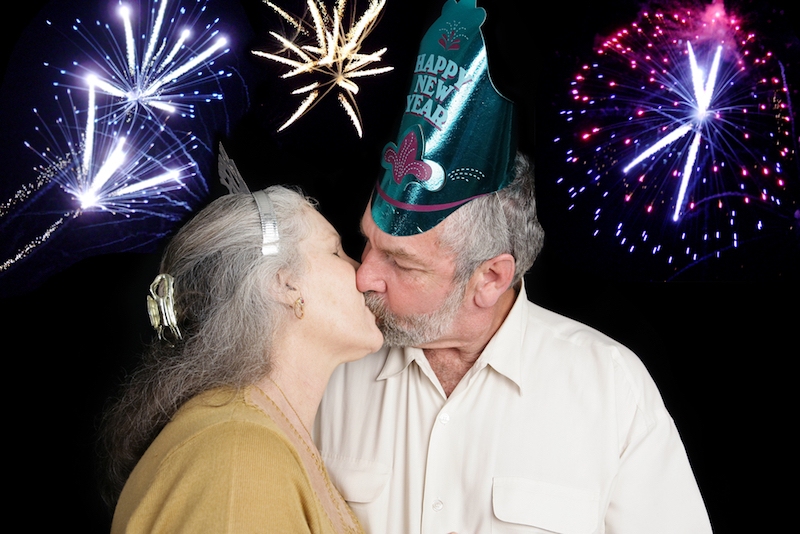
Puckering up at the stroke of midnight is a venerable tradition with ancient roots. Many cultures considered the transition from the warm to the cold seasons to be an intensely vulnerable time, when evil spirits could run amok, Aveni said.
Many of our traditions, including kissing, originally come from the English tradition of "saining," or offering blessing or protection, during the period of Yuletide, Aveni said. (Yuletide was originally a pre-Christian Germanic festival that eventually became synonymous with Christmastide in Europe.)
Kissing, in this context, was thought to bring good luck as people entered the vulnerable, transitional period of the new year, Aveni said.
"You want to be closest to those who support you," Aveni told Live Science.
Bubbly luxury
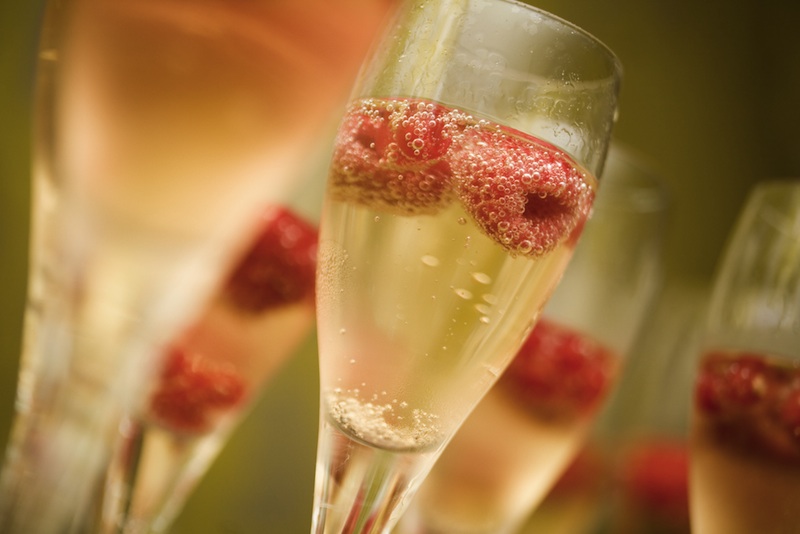
Popping champagne corks at the stroke of midnight is a mainstay on New Year’s Eve, whether at swanky parties or home celebrations. In general, overindulgence and excess are hallmarks of New Year’s celebrations around the world, Aveni said.
But when exactly did the peach-colored, bubbly beverage become synonymous with New Year’s Eve?
Despite its French name, champagne’s signature fizz traces its origins back to England in the 1500s, according to "Wine Science: Principles and Applications" (Academic Press, 2008), Live Science previously reported. [Champagne Facts for the New Year (Infographic)]
At that point, people figured out how to create bubbly bottled drinks. In 1662, Christopher Merret reported to the Royal Society of London that adding sugar to bottled wine created a fizzy beverage, thanks to the yeast in the wine, which consumed the sugar to produce carbon dioxide. It took about a century to perfect the fermentation technique, however, according to Imbibe Magazine.
The use of champagne for celebrations has its roots in the Christian ritual of consuming wine during the Eucharist as the blood of Christ. In A.D. 496, a wine from the Champagne region of France was used in the baptism of the Frankish warrior Clovis, according to champagne.fr, a website run by the Champagne Committee of France. From then on, wines from the Champagne region were often used at such religious events as consecrations, and at coronations and soirees, according to the website.
"After the French Revolution, it became a part of the secular rituals that replaced formerly religious rituals," Kolleen Guy, associate professor of history at the University of Texas at San Antonio and author of "When Champagne Became French" (The Johns Hopkins University Press, 2003), previously told Live Science. "You could 'christen a ship' without a priest, for example, by using the 'holy water' of champagne," Guy said.
By 1789, the French had taken the two elements — the bubbles and their prized Champagne-region wine — and put the two together for royal parties and celebrations. Champagne, however, didn’t become the ultimate New Year’s celebration beverage until producers of champagne tried to link the bubbly to festive occasions with family, and the rise of the middle class increased the purchasing power of ordinary people, according to Imbibe Magazine.
"Auld lang syne"

Another classic tradition is to sing "Auld Lang Syne," a Scottish poem that was recorded on paper officially in 1788 by the Scottish poet Robert Burns, according to Scotland.org. The melody itself, however, is a much older folk song that was known in Scotland, and the Scottish Museum set Burns’ words to the tune when he sent it in, according to the English Folk Dance and Song Society.
"There is an old song and tune which has often thrilled through my soul," Burns said in reference to the popular melody in his 1788 letter, according to the Burns encyclopedia.
Burns admitted to drawing inspiration for "Auld Lang Syne" from an old man he heard singing the song, and other variants of the song had appeared earlier in the 1700s.
In English, the literal translation of Auld Lang Syne is "old long times," but it means something more along the lines of "once upon a time." With its touch of nostalgia, it soon became a mainstay at British and Scottish funerals, farewells and group celebrations. It didn’t make it across the pond as a New Year's tradition until 1929, however, when the Guy Lombardo orchestra played it at a hotel in New York, Live Science previously reported.
Dropping the ball

At the stroke of midnight, revelers in Times Square will watch the giant ball drop in New York City. But where exactly did this tradition come from? In the old days, sailors used "time balls" to set their own timepieces while at sea. They would set these chronometers by using a spyglass to scan the harbor, looking for balls that were dropped into the water at certain times, PBS.org reported. The first time ball, which was installed in Portsmouth, England, made its first drop in 1829, and by 1845, Washington, D.C., had one installed as well, according to PBS.org.
By 1904, a big ball was present when revelers began partying in Times Square. But the first version of the ball — a wooden and iron orb that was adorned with 100 25-watt lightbulbs — dropped in 1907, according to the Times Square Alliance. That year, The New York Times publisher Adolph Ochs was hoping to find a replacement for the fireworks that had been banned by the police. (Hot ashes from the fireworks fell into the streets after the fireworks were deployed the year prior, according to PBS.org.) Ochs asked his chief electrician to conceive of an equally sparkly alternative — and the time ball was born.
Since the first ball drop, there have been seven balls, according to the Times Square Alliance. The current ball weighs 6 tons (5.4 metric tons), is 12 feet (3.65 meters) in diameter and gets its bling from 2,688 Waterford Crystal triangles and 32,256 LED lights, according to the alliance.
Balls aren’t the only things that drop on New Year’s Eve. In Port Clinton, Ohio, residents watch a 600-lb. walleye fish replica fall, while Boise, Idaho, famous for its potatoes, drops a glowing "GlowTato," WNYC reported.
New Year's resolution
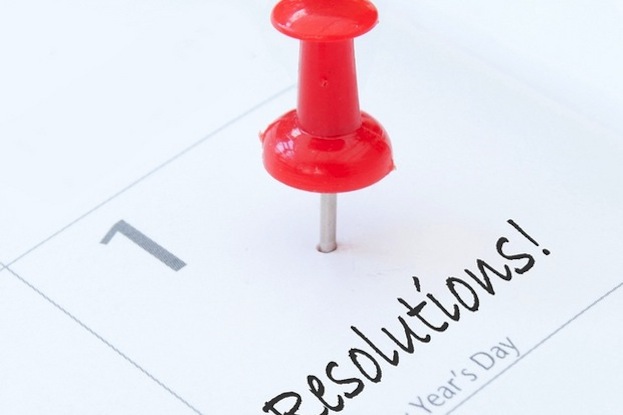
Messing up and promising to do better next time may be a uniquely human instinct that has no season, but making New Year’s resolutions dates back at least to the time of the ancient Mesopotamians. In Ancient Babylonia, citizens made spoken resolutions in March, during their 12-day-long New Year Festival, called Akitu, Live Science previously reported. The resolutions were not undertaken for mere self-improvement: They required making an oath to the sitting (or new) king, and were considered essential to keep the kingdom in the gods’ favor. [Most Popular New Year’s Resolutions]
The Romans also had a tradition of swearing an oath of loyalty to the emperor in March, when their New Year started. Although this Roman tradition didn’t directly translate to New Year’s resolutions, by the 1740s, the Methodist church had a practice of holding renewal services on Dec. 31. The services offer people a chance to look back at the year that passed and renew their commitment to God, Live Science reported.
In general, the act of making resolutions becomes the necessary, purifying ritual that follows the overindulgence of the new year, Aveni said. On Dec. 31, everybody is going to eat and drink to excess, "and then the next day you’ll wake up and hopefully you’ll have your resolutions to do the next year better."
Letting sparks fly
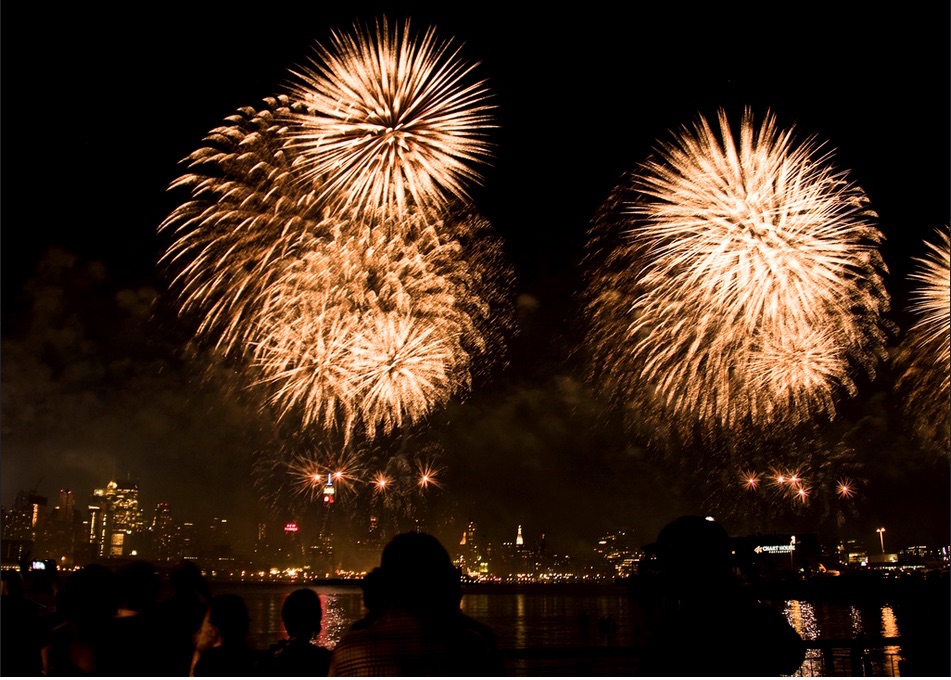
Do people ever need an excuse to make things go boom?
From China to Australia, people ring in the new year with noisemakers, sparklers and fireworks. But how did the tradition of ringing in the new year with a flash of light and a bang start?
It all comes back to the danger lurking in this transitional period, Aveni said.
In cultures around the world, people bang drums, light firecrackers and even beat the corners of their room to spook the spooky creatures lurking in the night.
"Anything to chase away the evil spirits," Aveni said.
Fireworks, for instance, were invented in the seventh century A.D. in China, and one of the express purposes of fireworks was to ward off evil spirits. From the beginning, the Chinese New Year was a reliable time to see the sparkling displays. Yet the tradition of setting off fireworks in the Western world seems to have evolved independently, Aveni said.
Superstitions abound
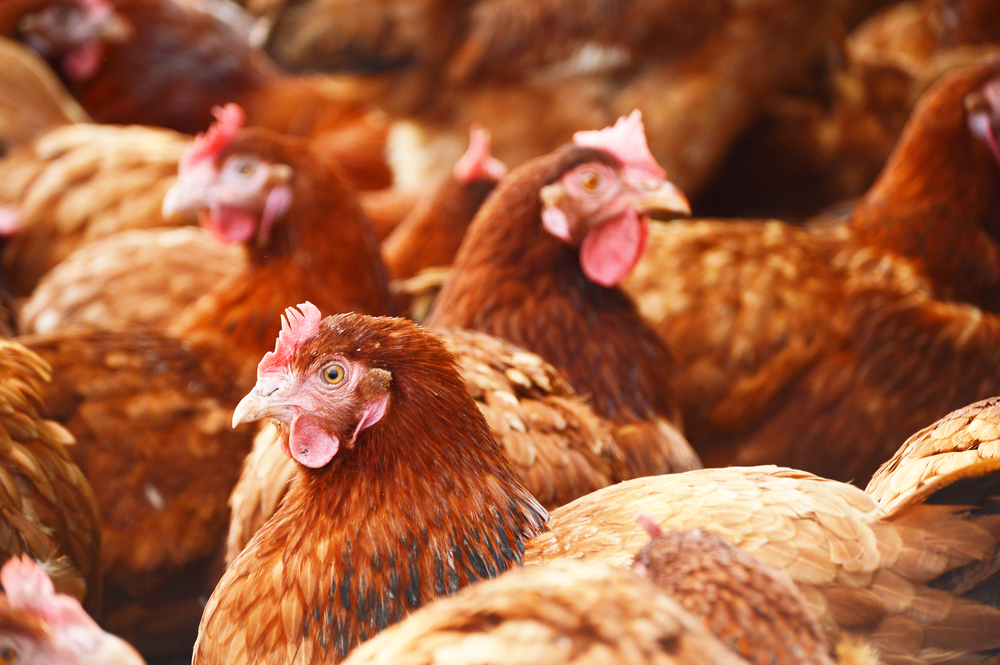
New Year's traditions around the world often come with a heavy dose of superstition.
For instance, in Brazil some avoid eating chicken in the first few minutes of the new year.
Why? Because chickens scratch the Earth backwards, consuming poultry would mean going backwards in life, rather than forward, the Rio Times reported. To avoid that fate, people eat foods that move forward, such as fish and pork. Italians, meanwhile, are supposed to reserve some of their wine grapes from the harvest to consume on New Year's Eve, which will mean they'll be frugal and financially savvy, according to Italy Magazine.
But why is the New Year so steeped in superstitious rituals? It turns out that rituals act as a buffer against anxiety and uncertainty, and what could be more uncertain than the future year, with all the events yet to come? New Year's and other holiday rituals ease that anxiety by making the world seem more predictable, according to Dimitris Xygalatas, Assistant Professor in Anthropology at the University of Connecticut
Scary start
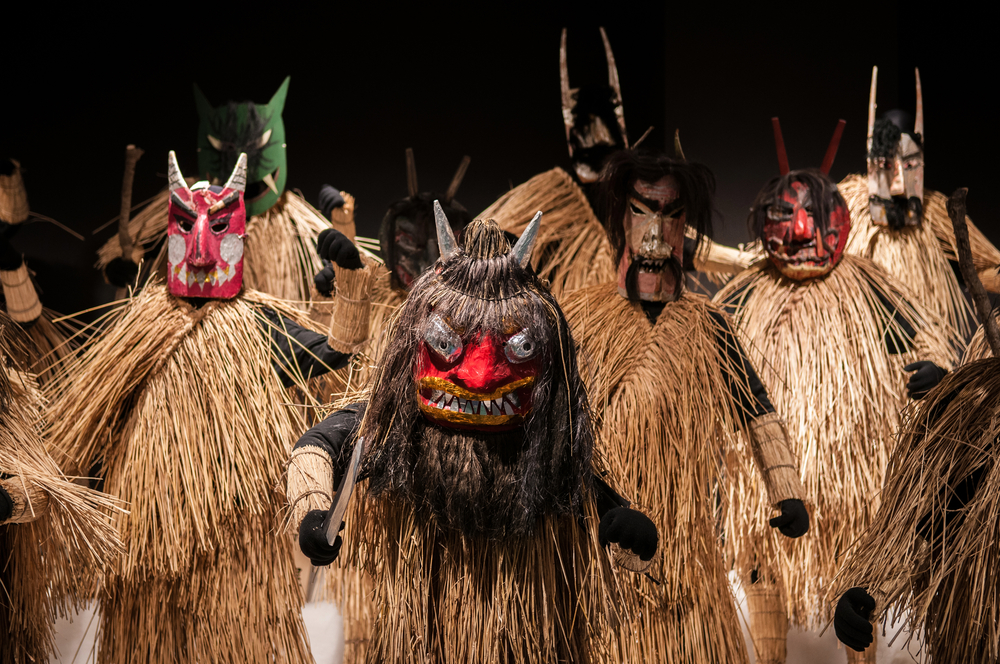
While most New Year's traditions are cheerful affairs, others are downright frightening.
In the Japanese village of Oga, on New Year's Eve men dress in grass masks and embody the Namahage, demonic figures who go door to door searching for new members of the community. After screaming at the children and new family members to be obedient, and to study and work hard, the more established members defend the newcomers and youngsters to the demon, who leaves the house, according to the Namahage Museum.
Meanwhile in Peru, an Andean "fight club" on Christmas Day allows people to kick and punch each other to resolve differences, so they can start the New Year with a clean slate — and some black eyes, according to " A Christmas Cornucopia: The Hidden Stories Behind Our Yuletide Traditions," (Penguin, 2016).
Money, Money, Money

Whether it's eating pork or leftover grapes, or hopping on one foot — a huge number of New Year's traditions are all about the Benjamins — or Lira or Euros. Prosperity looms large in the roots of many New Year's traditions.
The Turks, for instance, wear red underwear, run the faucet and sprinkle salt on their doorsteps to ensure prosperity, according to the Daily Sabah, while the Swiss will drop rich dollops of whipped cream to the floor and leave them there to usher in riches, according to the Farmer's Almanac. Filipinos, meanwhile, will wear polka dots, because the rotund shape of the circles symbolizes prosperity.
People in the south, meanwhile, eat black eyed peas, collard greens and cornbread because they resemble coins, dollar bills and shiny gold, respectively.
Traditions around the world
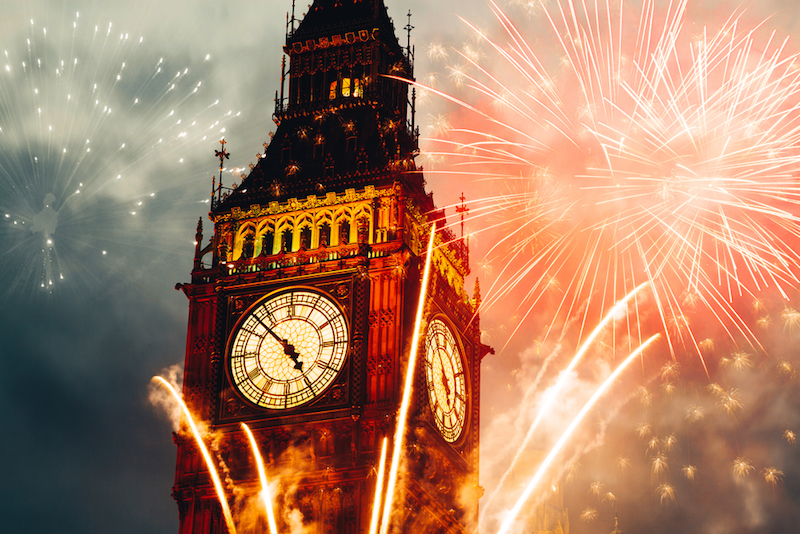
While there are some commonalities across the world, almost every culture has its unique take on the new year.
This story was originally published on Dec. 29, 2016 and updated on Dec. 29, 2017.
For instance, in Mexico, people may eat one grape for every chime of the church bells at midnight, Aveni said.
Aztecs used to burn all of their mats during the new year, as fire was considered cleansing. They would then take the clean, new fire to their homes to light their hearths, Aveni said.
The English have a tradition of leaving money out on their porch to be purified, taking the cleaned, new money into their house on the new year.
Meanwhile, in Scotland, the tradition of the "first footing" says that, for good luck, the first person to set foot in the house after the stroke of midnight should be a tall, dark male bearing a lump of coal, shortbread, salt, a black bun and a "wee dram" of whisky, according to the History and Heritage Accommodation Guide of the UK.
Editor's Note: This article was originally published on Dec. 29, 2016 and was updated on Dec. 30, 2017 to include additional information on New Year's traditions in other countries.
Sign up for the Live Science daily newsletter now
Get the world’s most fascinating discoveries delivered straight to your inbox.

Tia is the managing editor and was previously a senior writer for Live Science. Her work has appeared in Scientific American, Wired.com and other outlets. She holds a master's degree in bioengineering from the University of Washington, a graduate certificate in science writing from UC Santa Cruz and a bachelor's degree in mechanical engineering from the University of Texas at Austin. Tia was part of a team at the Milwaukee Journal Sentinel that published the Empty Cradles series on preterm births, which won multiple awards, including the 2012 Casey Medal for Meritorious Journalism.










